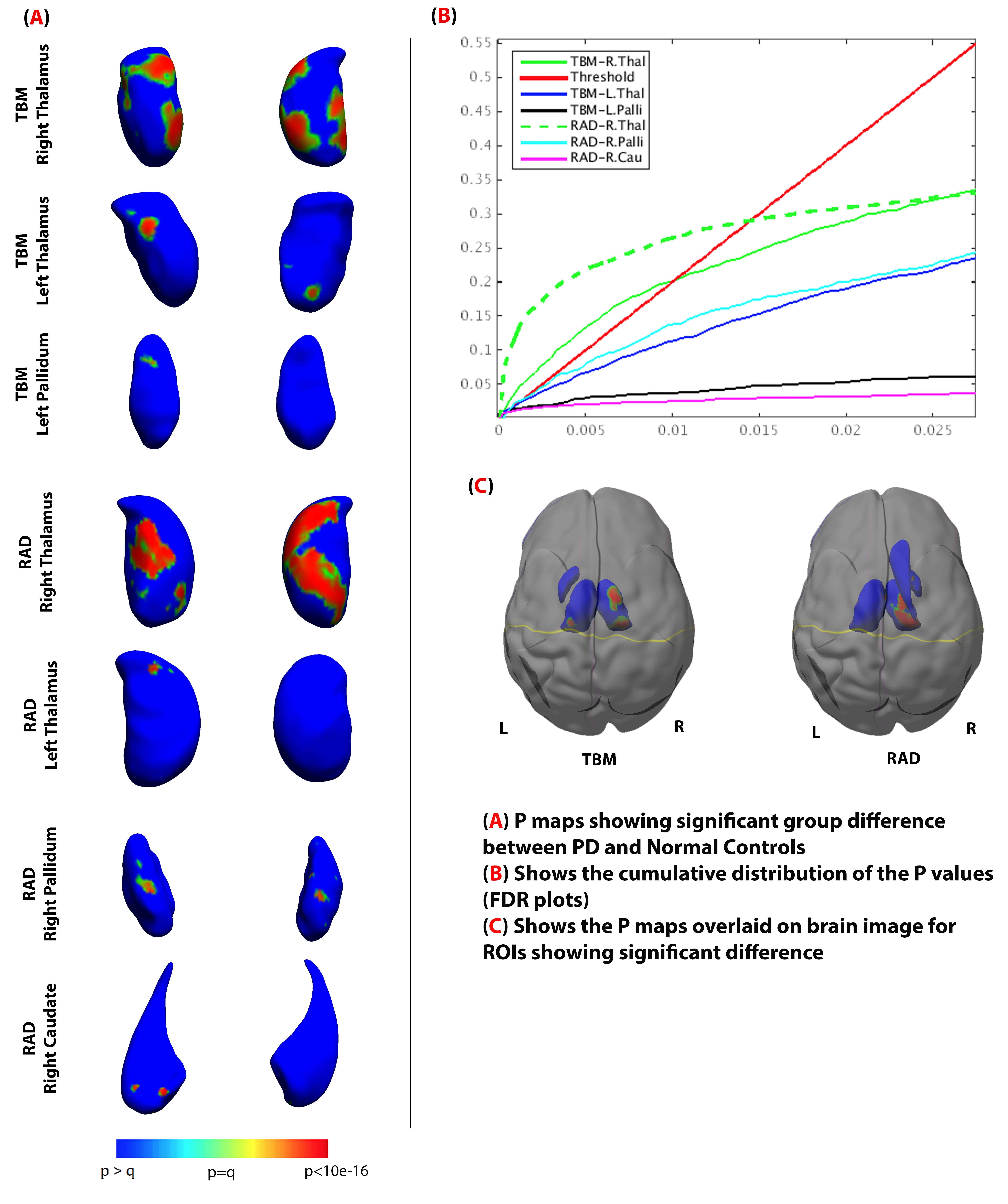Striatal and Thalamic Shape Alterations due to Parkinson’s Disease
Anjanibhargavi Ragothaman, Christopher Ching, Zvart Abaryan, Adam Mezher, Paul Thompson, Boris Gutman
Parkinson’s disease (PD) is a progressive neurological motor related disorder, characterized by trouble initiating movement, resting tremors, slowness of movement and muscular stiffness [1]. Volumetric analysis of the brain images tends not to reveal subtle changes in structure for patients with PD. Alternatively, shape analysis of subcortical region boundaries may reveal more subtle, localized effects. In this study, we used a medial demons surface registration and shape analysis of 7 subcortical regions: amygdala, nucleus accumbens, putamen, caudate, globus pallidus, hippocampus, and thalamus. Following shape registration, two surface measures – thickness and dilation ratio (Jacobian Determinant) – were used to quantify local shape differences [2]. The data were obtained from the Parkinson’s Progressive Markers Initiative (PPMI) (116M:68F healthy controls and 264M:142F PD subjects. Subcortical parcellations were obtained using Freesurfer 5.3. Mass-univariate test for group difference between controls and PD subjects was performed, controlling for age, gender, ICV and handedness. Shape signatures of the following regions were significantly different after False Discovery Rate (FDR) correction for multiple comparisons (critical q in parentheses, higher implies greater effect): right and left thalamus (q=0.0102, q=0.001), left pallidum (q=3.39e-04) for dilation ratio measures. Right and left thalamus (q=0.00144, q=1.69e-04), right pallidum (q=0.0012) and right caudate (q=4.76e-04) showed significant difference for radial thickness measures. P-maps localizing group differences are shown in Figure 1, and are consistent with previous findings in PPMI [3]. This study suggests that subcortical shape changes can be used as biomarkers for early detection of the disease.
- [1] Rivlin-Etzion M, Elias S, Heimer G, Bergman H: Computational physiology of the basal ganglia in Parkinson's disease. Prog Brain Res 2010, 183:259-273.
- [2] Gutman BA, Jahanshad N, Ching CRK, Wang Y, Kochunov PV, Nichols TE, Thompson PM: Medial Demons Registration Localizes the Degree of Genetic Influence over Subcortical Shape Variability: An N= 1480 Meta-Analysis. International Symposium on Biomedical Imaging (ISBI 2015) 2015.
- [3] Garg A, Appel-Cresswell S, Popuri K, McKeown MJ, Beg MF: Morphological alterations in the caudate, putamen, pallidum, and thalamus in Parkinson's disease. Frontiers in Neuroscience 2015, 9:101.



